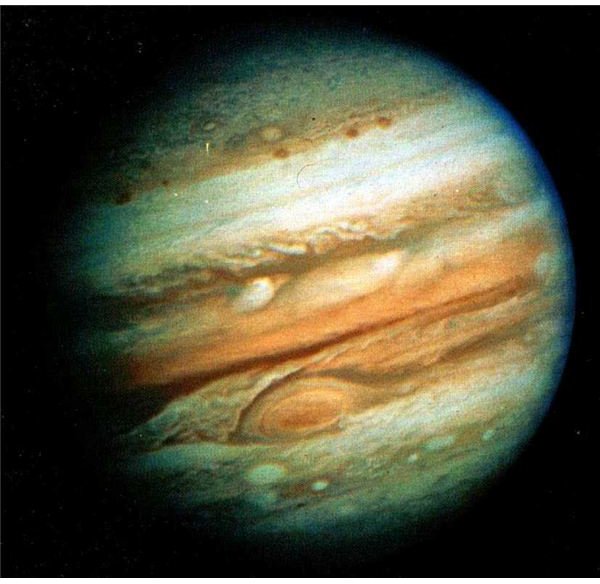What to know more about Jovian weather?
Jovian Weather
Jupiter’s weather is truly something special. Most people are familiar with the famous red spot, which is a violent storm that has raged on Jupiter for an estimated 180 - 300 years. With many flybys of Jupiter, scientists have been able to explore the oddities of Jovian weather. The mechanics of Jupiter’s weather is very much like Earth’s, but it has a very different source of power.
Jupiter is too far from the Sun for its weather systems to be solar driven. Jovian weather is driven by internal heat created by the gas giant. Some have suggested that possibly an internal source of fusion or heat-related core activity is the cause. We know from flybys that Jupiter’s output of heat is more than double the amount of solar radiation it receives. There is clearly a source of heat radiating from the planet. From our own Earth, we know that the core of inner planets can generate heat. The lack of clarity comes from the fact that Jupiter, and the outer planets are gas giants. We know very little about how their internal structure functions.
Jupiter Weather Versus Earth Weather
So, what is the weather like on Jupiter?
We do know that Jovian weather is guided by hot gas rising and cold gas sinking due to convection currents. This is the exact same process that drives weather on Earth. On Earth, the Sun heats the land and ocean causing rising air currents in the atmosphere. Heated air holds more moisture, rises and releases the moisture, cools and sinks back to Earth. This process is simple, and it disperses energy throughout the Earth’s atmosphere. The same principles are at work in Jovian weather, but without the Sun as the primary cause. The altitudes are much higher because everything about the scale of Jupiter is much larger than Earth. It is by far the largest planet in the solar system. The red spot alone is two to three times bigger than Earth.
The Jovian atmosphere’s components aren’t similar to Earth. Our atmosphere is mostly nitrogen with major components of oxygen, argon and carbon dioxide. The Jovian atmosphere is mostly molecular hydrogen and helium. These components make it more star-like than similar to the rocky inner planets. Jupiter’s atmosphere becomes charged in storms and produces lightning. But when Jovian rain (liquid helium) falls, it does not reach the lower layers. Instead it evaporates and rises into the upper atmosphere. Rain never contacts a surface on Jupiter, since the planet doesn’t have a surface, so to speak. On Earth, our rain is a critical part of our water cycle and nothing on Earth could live without rain’s replenishment.
Some of Jupiter’s storms are described as anti-cyclonic based on their direction of spin. Other Jovian storms have lasted for years, and it is not unusual for even small storms to last for days. On Earth, virtually none of our storms last for a day except for hurricanes. In this way, Earth and Jupiter are dramatically different.
The lower atmosphere of Jupiter contains ammonia, ammonium hydrosulfide, and water. No oxygen is present. We know quite a great deal about the Jovian upper atmosphere because the Galileo atmospheric probe sent back comprehensive data before failing. Winds were recorded on Jupiter that topped 100 m/s. These factors combined with the unique atmospheric banding on Jupiter that creates weather zones, give Juper a very different atmospheric environment from Earth.
More gentle weather on our planet has obviously added the development of life. Jupiter gives us a glimpse of how extreme weather conditions can be on other planets.
References
Reference Links:
